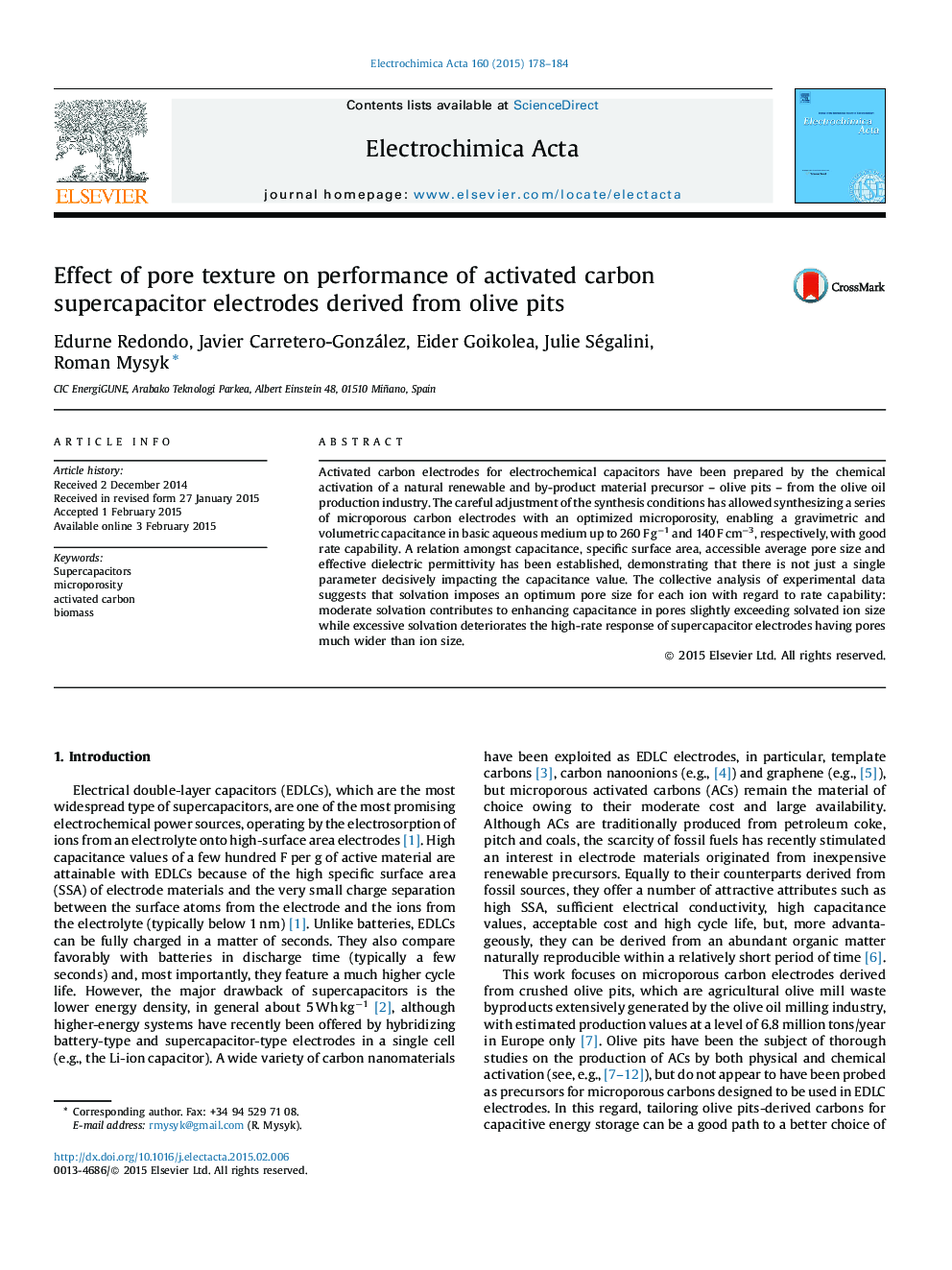| Article ID | Journal | Published Year | Pages | File Type |
|---|---|---|---|---|
| 184403 | Electrochimica Acta | 2015 | 7 Pages |
•Olive pits were employed as the precursor for supercapacitor electrodes.•Microporosity was tailored to provide optimum capacitive rate performance.•A link between capacitance rate capability and textural properties was established.
Activated carbon electrodes for electrochemical capacitors have been prepared by the chemical activation of a natural renewable and by-product material precursor – olive pits – from the olive oil production industry. The careful adjustment of the synthesis conditions has allowed synthesizing a series of microporous carbon electrodes with an optimized microporosity, enabling a gravimetric and volumetric capacitance in basic aqueous medium up to 260 F g−1 and 140 F cm−3, respectively, with good rate capability. A relation amongst capacitance, specific surface area, accessible average pore size and effective dielectric permittivity has been established, demonstrating that there is not just a single parameter decisively impacting the capacitance value. The collective analysis of experimental data suggests that solvation imposes an optimum pore size for each ion with regard to rate capability: moderate solvation contributes to enhancing capacitance in pores slightly exceeding solvated ion size while excessive solvation deteriorates the high-rate response of supercapacitor electrodes having pores much wider than ion size.
